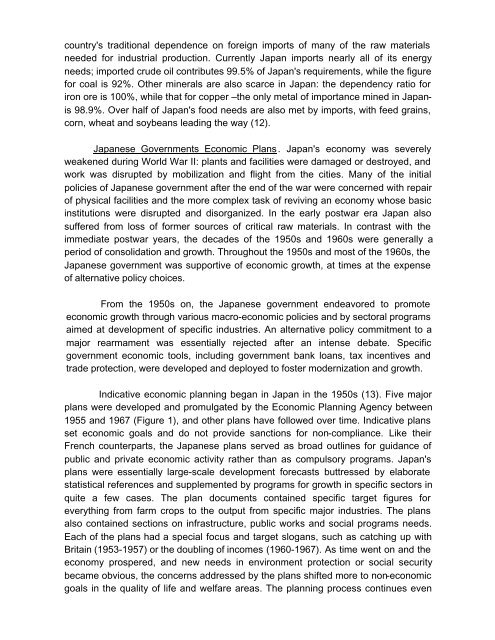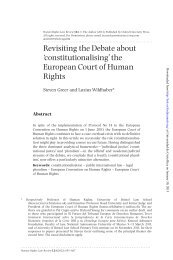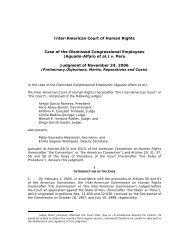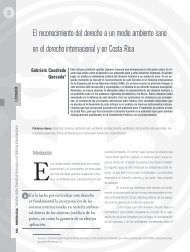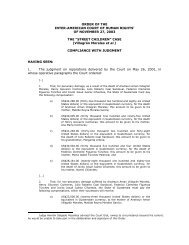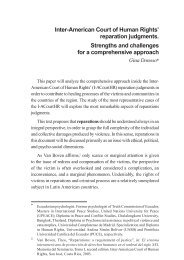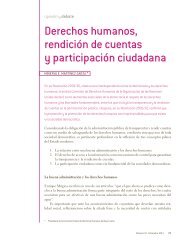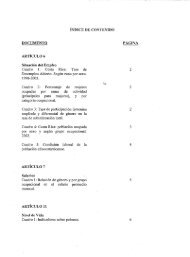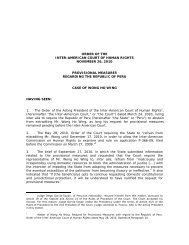The Political Economy of Japan Bradley M. RICHARDSON
The Political Economy of Japan Bradley M. RICHARDSON
The Political Economy of Japan Bradley M. RICHARDSON
- No tags were found...
You also want an ePaper? Increase the reach of your titles
YUMPU automatically turns print PDFs into web optimized ePapers that Google loves.
country's traditional dependence on foreign imports <strong>of</strong> many <strong>of</strong> the raw materialsneeded for industrial production. Currently <strong>Japan</strong> imports nearly all <strong>of</strong> its energyneeds; imported crude oil contributes 99.5% <strong>of</strong> <strong>Japan</strong>'s requirements, while the figurefor coal is 92%. Other minerals are also scarce in <strong>Japan</strong>: the dependency ratio foriron ore is 100%, while that for copper –the only metal <strong>of</strong> importance mined in <strong>Japan</strong>is98.9%. Over half <strong>of</strong> <strong>Japan</strong>'s food needs are also met by imports, with feed grains,corn, wheat and soybeans leading the way (12).<strong>Japan</strong>ese Governments Economic Plans. <strong>Japan</strong>'s economy was severelyweakened during World War II: plants and facilities were damaged or destroyed, andwork was disrupted by mobilization and flight from the cities. Many <strong>of</strong> the initialpolicies <strong>of</strong> <strong>Japan</strong>ese government after the end <strong>of</strong> the war were concerned with repair<strong>of</strong> physical facilities and the more complex task <strong>of</strong> reviving an economy whose basicinstitutions were disrupted and disorganized. In the early postwar era <strong>Japan</strong> alsosuffered from loss <strong>of</strong> former sources <strong>of</strong> critical raw materials. In contrast with theimmediate postwar years, the decades <strong>of</strong> the 1950s and 1960s were generally aperiod <strong>of</strong> consolidation and growth. Throughout the 1950s and most <strong>of</strong> the 1960s, the<strong>Japan</strong>ese government was supportive <strong>of</strong> economic growth, at times at the expense<strong>of</strong> alternative policy choices.From the 1950s on, the <strong>Japan</strong>ese government endeavored to promoteeconomic growth through various macro-economic policies and by sectoral programsaimed at development <strong>of</strong> specific industries. An alternative policy commitment to amajor rearmament was essentially rejected after an intense debate. Specificgovernment economic tools, including government bank loans, tax incentives andtrade protection, were developed and deployed to foster modernization and growth.Indicative economic planning began in <strong>Japan</strong> in the 1950s (13). Five majorplans were developed and promulgated by the Economic Planning Agency between1955 and 1967 (Figure 1), and other plans have followed over time. Indicative plansset economic goals and do not provide sanctions for non-compliance. Like theirFrench counterparts, the <strong>Japan</strong>ese plans served as broad outlines for guidance <strong>of</strong>public and private economic activity rather than as compulsory programs. <strong>Japan</strong>'splans were essentially large-scale development forecasts buttressed by elaboratestatistical references and supplemented by programs for growth in specific sectors inquite a few cases. <strong>The</strong> plan documents contained specific target figures foreverything from farm crops to the output from specific major industries. <strong>The</strong> plansalso contained sections on infrastructure, public works and social programs needs.Each <strong>of</strong> the plans had a special focus and target slogans, such as catching up withBritain (1953-1957) or the doubling <strong>of</strong> incomes (1960-1967). As time went on and theeconomy prospered, and new needs in environment protection or social securitybecame obvious, the concerns addressed by the plans shifted more to non-economicgoals in the quality <strong>of</strong> life and welfare areas. <strong>The</strong> planning process continues even


